Two tigers. One wild past. One fierce present.
The saber-tooth wasn’t just a tiger with oversized fangs—it was a beast built for bone-crushing showdowns and Ice Age survival. Fast-forward to today, and the modern tiger prowls with stealth, muscle, and mind-blowing power, reigning as the apex predator of its domain.
But who really takes the crown?
From jaw strength to hunting style, from family life to extinction tales—this face-off is packed with bite. Whether you’re Team Prehistoric or Team Present Day, you’re in for a wild ride through evolution, survival, and pure animal dominance.
Let’s get into it—fangs first.
Physical Appearance
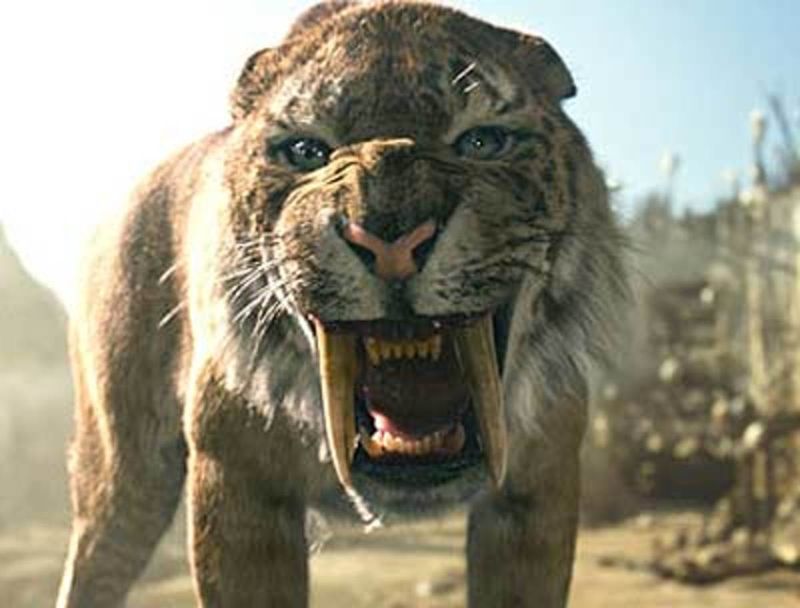
The saber-tooth tiger, with its iconic elongated canine teeth, presents a striking image. These teeth, up to 8 inches long, were its most distinctive feature, used to pierce and tear flesh. In contrast, the modern tiger possesses a more streamlined physique, built for speed and stealth. Its vibrant orange coat with distinctive black stripes provides camouflage in dense forests. Both creatures exhibit a muscular frame, yet their physical adaptations serve different purposes. While the saber-tooth tiger relied on strength, the modern tiger is a master of agility. This divergence highlights the evolutionary paths shaped by their environments.
Hunting Techniques
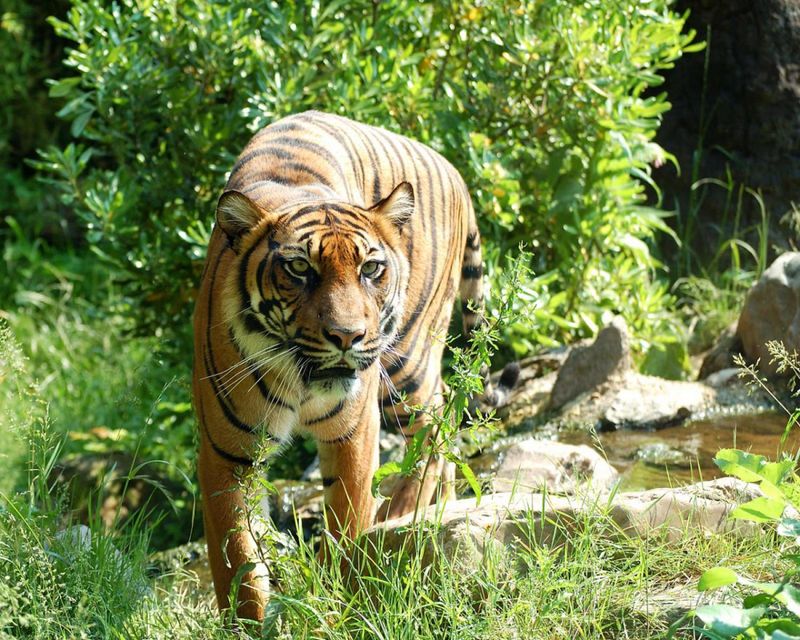
Hunting techniques reveal much about a predator’s lifestyle. The saber-tooth tiger, a powerful ambush predator, relied on surprise and brute strength. It would use its massive forelimbs to wrestle prey to the ground, delivering a fatal bite with its saber-like canines. The modern tiger, however, is a solitary stalker, moving silently through the jungle. Its stealth and patience are its greatest weapons, enabling it to approach prey undetected. Once in range, it pounces with lethal precision. These contrasting methods showcase the adaptability of predators to their environments and available prey. Each has mastered its domain in its unique way.
Dietary Preferences
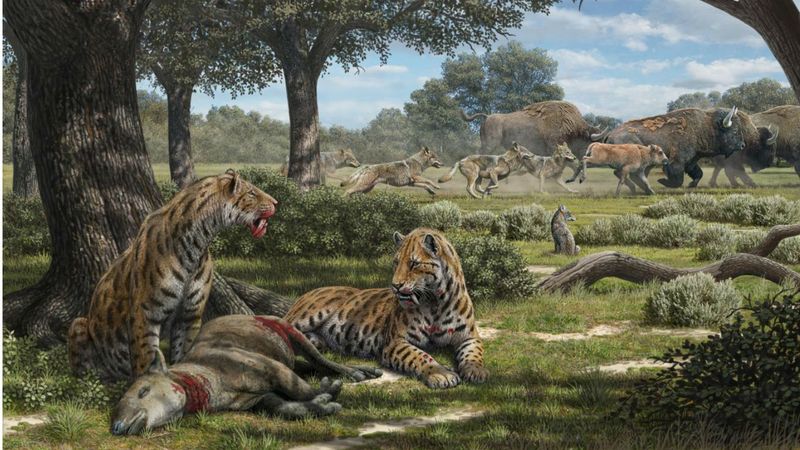
The dietary habits of predators are shaped by their habitat and available prey. The saber-tooth tiger primarily hunted large prehistoric mammals like mammoths and giant sloths. Its powerful jaws and teeth were adapted for such formidable prey, allowing it to puncture thick hides and deliver deadly bites. Modern tigers, on the other hand, have a more varied diet. They hunt deer, boars, and smaller mammals, demonstrating remarkable adaptability. This dietary flexibility has enabled them to thrive in diverse habitats, from the dense jungles of Asia to the sparse forests of Siberia. Both predators have developed efficient feeding strategies, reflecting their evolutionary success.
Habitat Adaptation
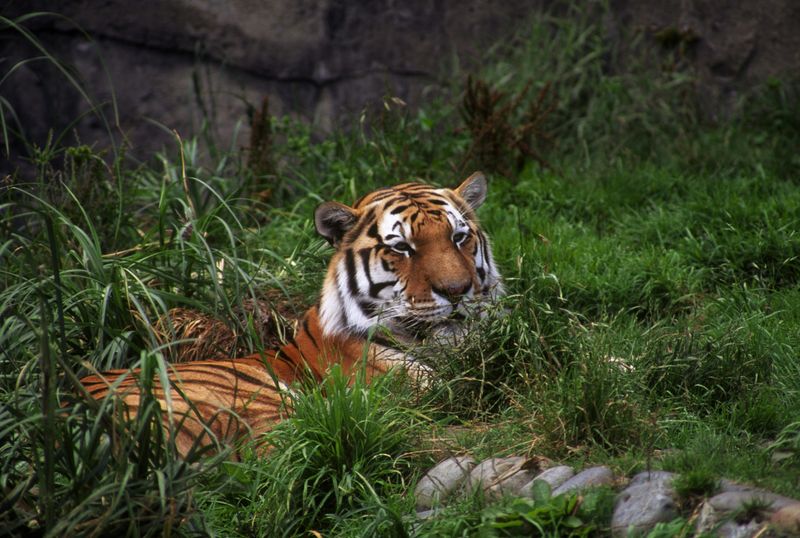
Habitat plays a crucial role in the evolution of any species. The saber-tooth tiger adapted to open savannas and woodlands, environments that required strength and resilience. These settings allowed it to take advantage of its ambush tactics, often hiding in sparse vegetation to surprise prey. Conversely, the modern tiger thrives in dense forests and jungles, where its striped coat provides perfect camouflage. This adaptation aids in its stealthy hunting approach. The ability of each predator to adapt to its surroundings underscores the importance of habitat in shaping behavior and physical traits, illustrating the dynamic relationship between environment and evolution.
Social Behavior

Social behavior differs significantly between these two predators. The saber-tooth tiger is believed to have had a more social structure, potentially forming small groups or family units. This behavior might have facilitated cooperative hunting strategies, allowing them to take down larger prey. On the other hand, modern tigers are solitary creatures, fiercely territorial and independent. They only come together for mating or to raise cubs. This solitary nature may result from their need to cover large territories to find sufficient food. These behavioral differences reflect adaptations to their environments and prey, illustrating the diverse strategies used by apex predators to survive.
Extinction vs. Endangerment
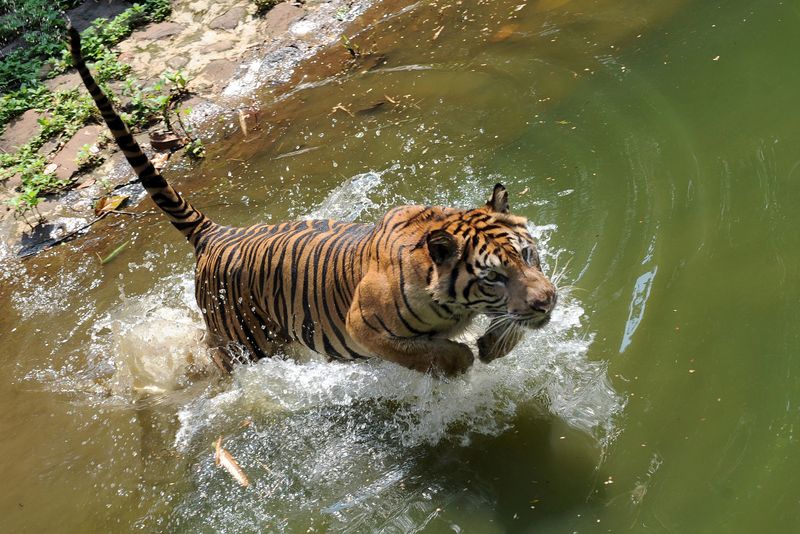
The saber-tooth tiger met its demise thousands of years ago, disappearing from the earth as climate changes and loss of prey reshaped the landscape. In contrast, the modern tiger still roams the planet, though it faces significant threats. Human encroachment, poaching, and habitat destruction have driven some tiger subspecies to the brink of extinction. Conservation efforts are underway to protect these majestic animals, aiming to preserve their natural habitats and reduce human-wildlife conflict. The contrasting fates of these predators highlight the ongoing challenges faced by wildlife, emphasizing the need for continued conservation and awareness efforts to safeguard biodiversity.
Reproductive Strategies
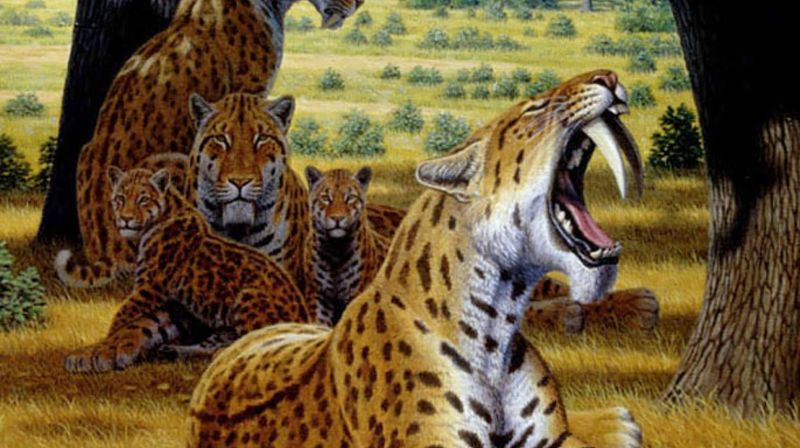
Reproductive strategies offer insight into the life cycle of predators. The saber-tooth tiger likely exhibited nurturing behaviors, with females caring for offspring in secure dens. This protection would ensure the survival of young cubs in a precarious environment. Modern tigers share a similar approach, with mothers providing care and teaching essential survival skills. Cubs remain with their mothers for up to two years, learning to hunt and fend for themselves. These strategies reflect the importance of parental investment in species survival. Differences in the duration and nature of care illustrate the varying pressures faced by these predators throughout their evolutionary history.
Evolutionary Timeline
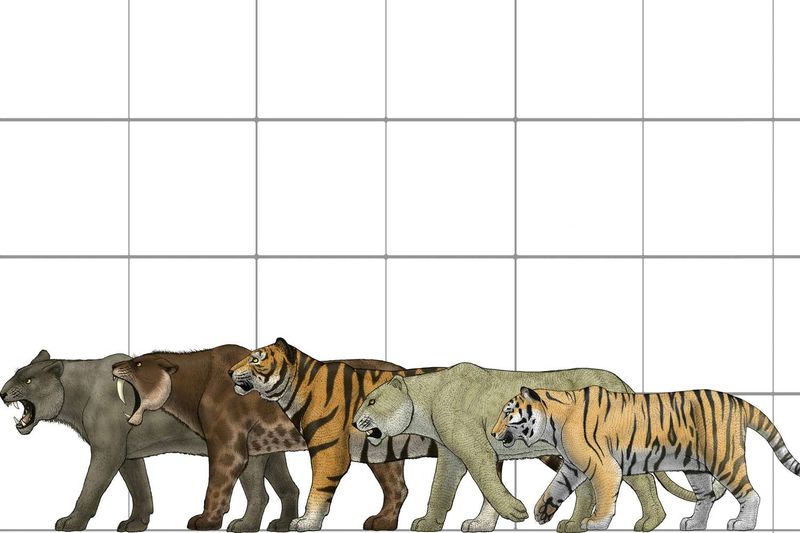
The evolutionary timeline of these predators reveals fascinating insights into their development. The saber-tooth tiger thrived during the Pleistocene epoch, adapting to the megafauna-rich environment of the time. Their evolution was marked by specialized adaptations, like massive canines and powerful forelimbs. Modern tigers emerged much later, evolving approximately 2 million years ago. They adapted to a variety of habitats, developing traits suited for stealth and agility. Both predators demonstrate the dynamic nature of evolution, shaped by changing climates and prey availability. This timeline underscores the resilience and adaptability of these apex predators across millennia.
Cultural Impact

Both the saber-tooth tiger and modern tiger have left indelible marks on human culture. Saber-tooth tigers often appear in ancient cave paintings, reflecting their significance to early humans. These images capture the awe and reverence they inspired. Modern tigers continue to hold cultural significance, symbolizing strength and courage in various cultures. They appear in folklore, art, and media, embodying both fear and respect. This cultural impact highlights the deep connection between humans and these majestic creatures, illustrating how they have captured our imagination across time. Their presence in our collective consciousness underscores their enduring legacy as icons of the wild.
Physical Strength
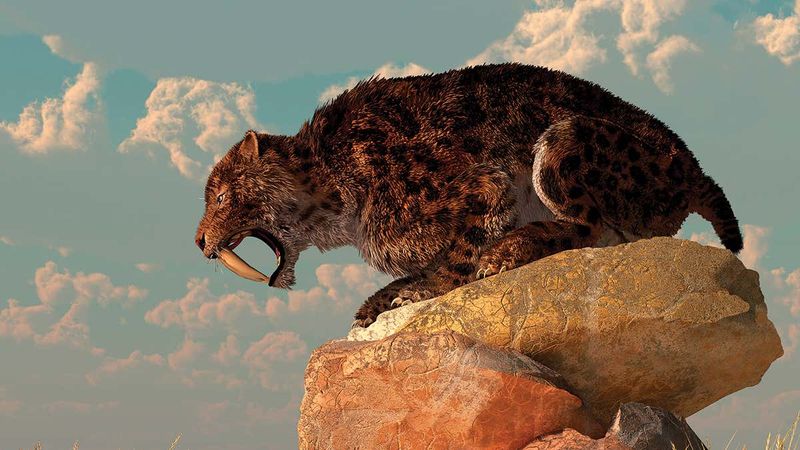
Physical strength is a hallmark of both predators. The saber-tooth tiger, with its massive build and powerful forelimbs, was well-equipped for overpowering prey. Its robust physique allowed it to engage in close combat, leveraging strength to subdue large mammals. Modern tigers, while also muscular, are built for a combination of strength and speed. Their powerful hindquarters enable explosive sprints and agile movements. This blend of strength and agility makes them formidable hunters. These physical attributes reflect the evolutionary pressures faced by each predator, highlighting their adaptations to the challenges of their respective environments and prey.
Scientific Discoveries
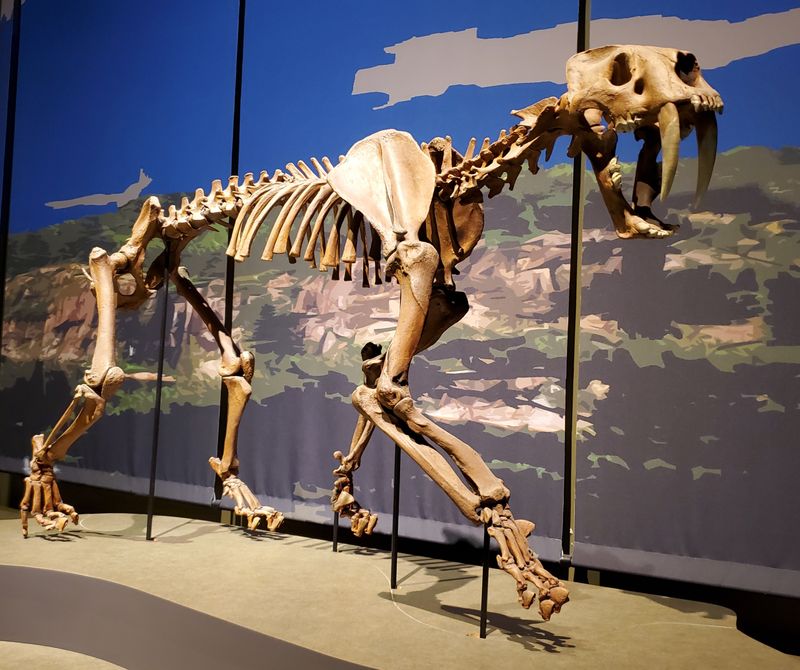
Scientific discoveries continue to shed light on these fascinating predators. The study of saber-tooth tiger fossils has provided valuable insights into their anatomy and behavior, revealing information about their hunting strategies and social structures. In contrast, modern tigers are subjects of ongoing research, with biologists studying their ecology, genetics, and conservation needs. Advances in technology, such as GPS tracking and DNA analysis, enhance our understanding of these creatures. These scientific endeavors highlight the importance of research in uncovering the mysteries of the past and informing conservation efforts for the future, bridging the gap between ancient and modern predatory giants.
Role in Ecosystems
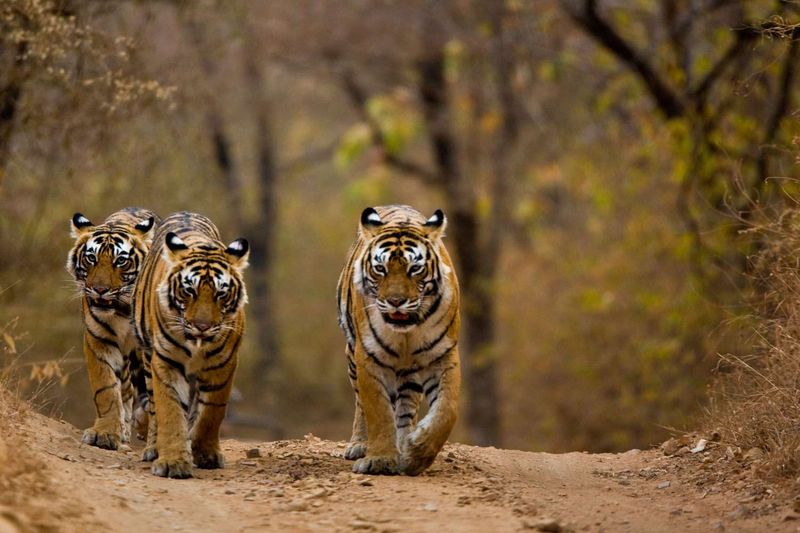
Both predators play crucial roles in their respective ecosystems. The saber-tooth tiger, as a top predator, helped control populations of large herbivores, influencing vegetation patterns and ecosystem dynamics. Its presence shaped the balance of prehistoric habitats. Modern tigers continue this legacy, maintaining the health of ecosystems by regulating prey populations. They prevent overgrazing and support biodiversity by ensuring a balanced food chain. The role of both predators underscores the importance of apex species in maintaining ecological stability. Their impact highlights the interconnectedness of life and the delicate balance required for thriving ecosystems.
Anatomical Adaptations
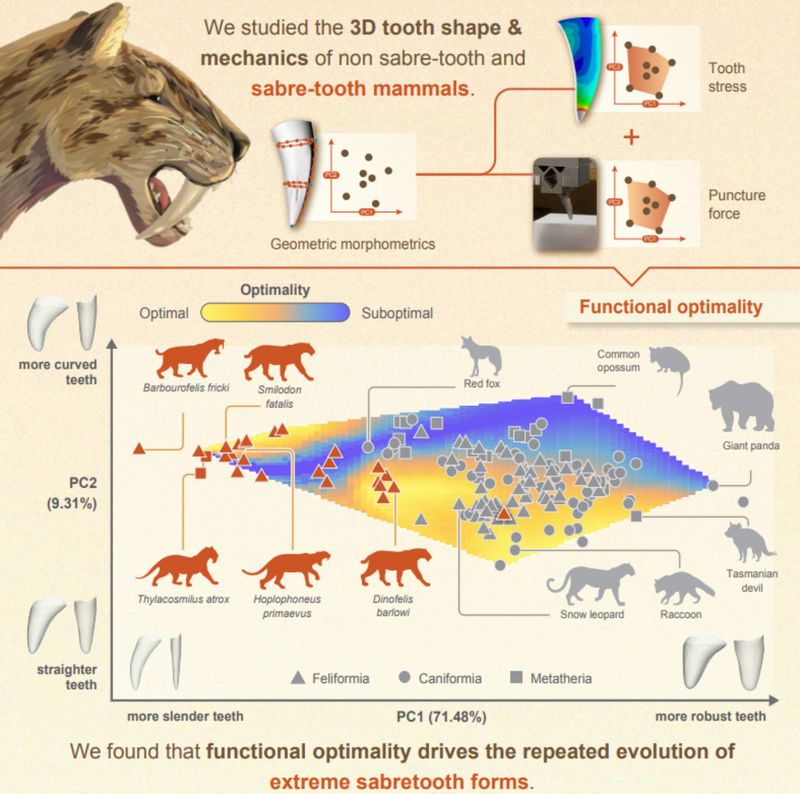
Anatomical adaptations reveal much about a predator’s lifestyle. The saber-tooth tiger’s elongated canines were its defining feature, enabling it to deliver deadly bites. Its forelimbs were adapted for grasping prey, reflecting its reliance on strength. Modern tigers, meanwhile, have developed retractable claws, aiding in silent stalking and precision attacks. Their sharp claws help grip and immobilize prey. These anatomical differences highlight the diverse evolutionary paths taken by each predator, shaped by their hunting needs and environments. The intricacy of these adaptations showcases the marvel of evolution, illustrating the fine-tuned mechanisms that enable survival in the wild.
Conservation Challenges
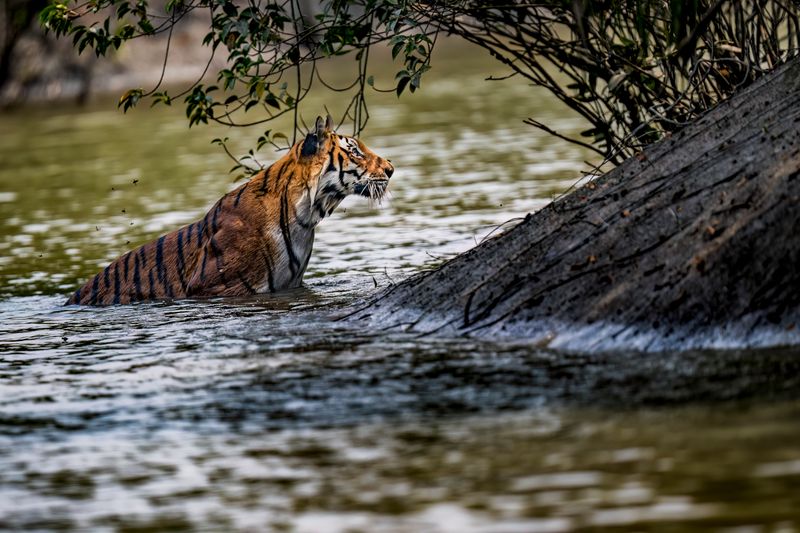
Conservation challenges differ drastically between these predators. The saber-tooth tiger is long extinct, but its legacy informs current conservation efforts for modern tigers. Today, tigers face habitat loss, poaching, and conflict with humans. Conservationists work tirelessly to protect these animals, establishing reserves and anti-poaching initiatives. Public awareness campaigns also strive to reduce demand for tiger products. These efforts highlight the struggles of preserving biodiversity in a rapidly changing world. The contrasting conservation statuses of these predators underscore the urgency of protecting existing wildlife, ensuring the continued presence of magnificent creatures on our planet.
Mythology and Symbolism
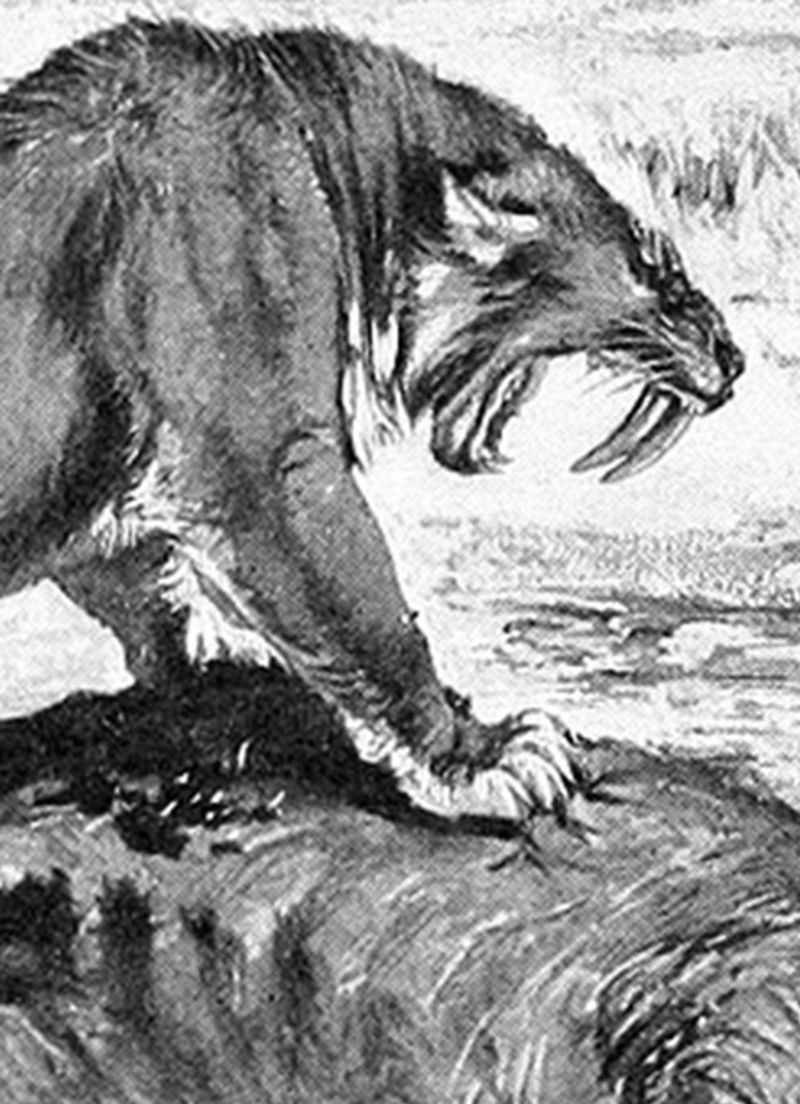
Mythology and symbolism weave through the stories of both predators. The saber-tooth tiger, though extinct, is often cast as a fearsome creature in legends, its fearsome appearance and prowess immortalized in tales. Modern tigers carry similar symbolic weight, representing power and independence across cultures. They appear in mythology as guardians, embodying the spirit of the wild. This symbolic resonance reflects humanity’s fascination with these predators, highlighting their enduring influence on our cultural narratives. The myths and symbols associated with these creatures reveal the profound impact they have had on our imagination and the stories we tell ourselves about nature’s might.

